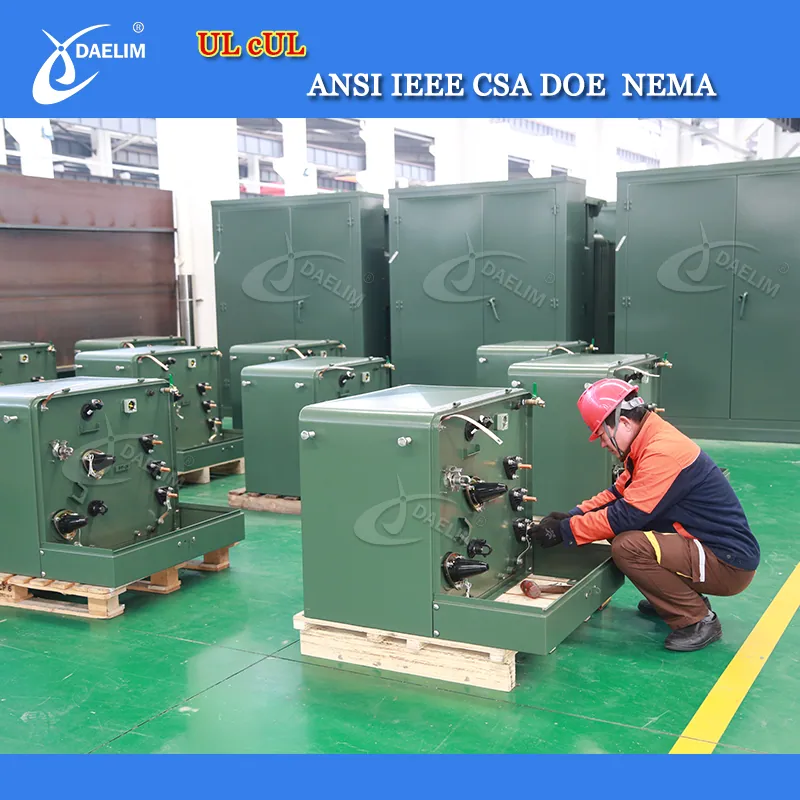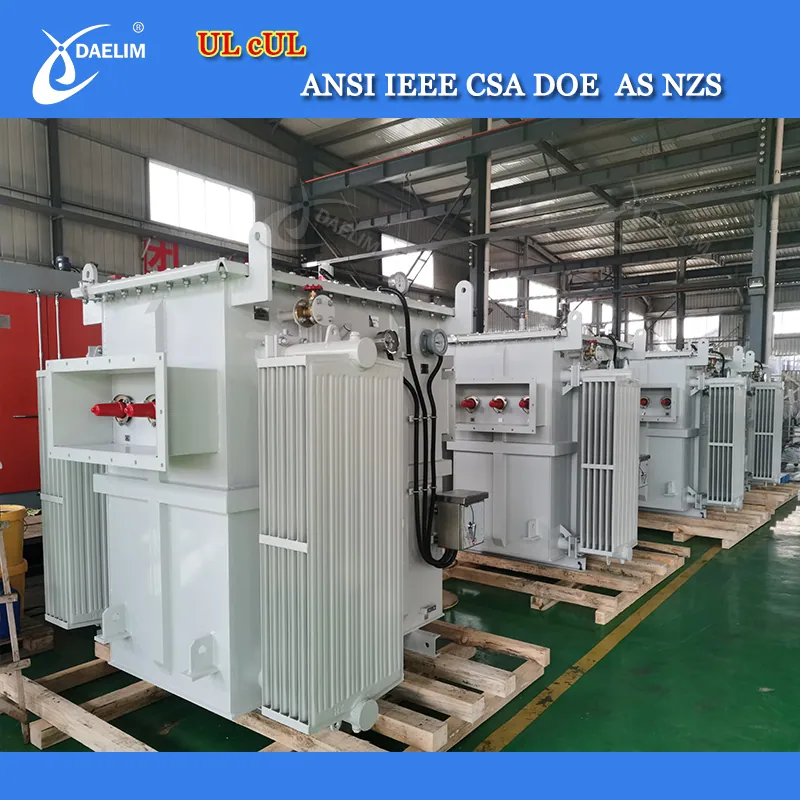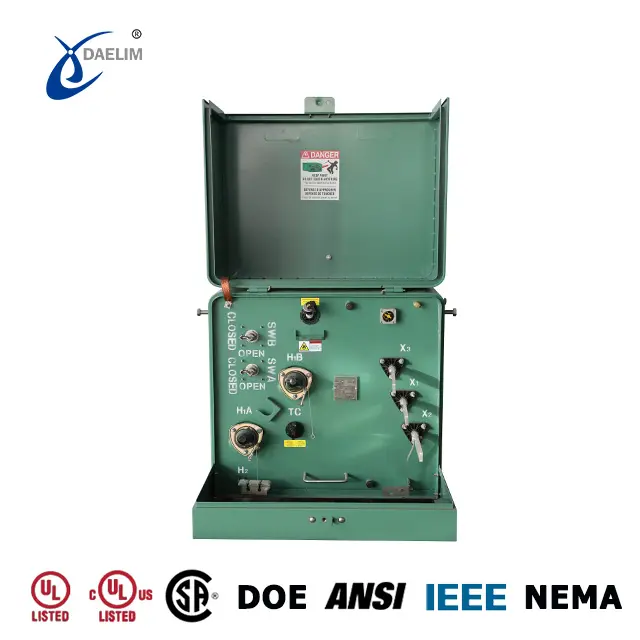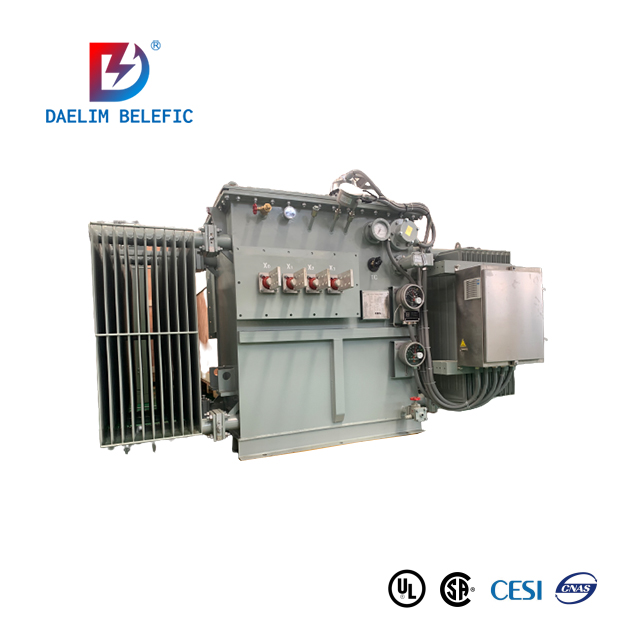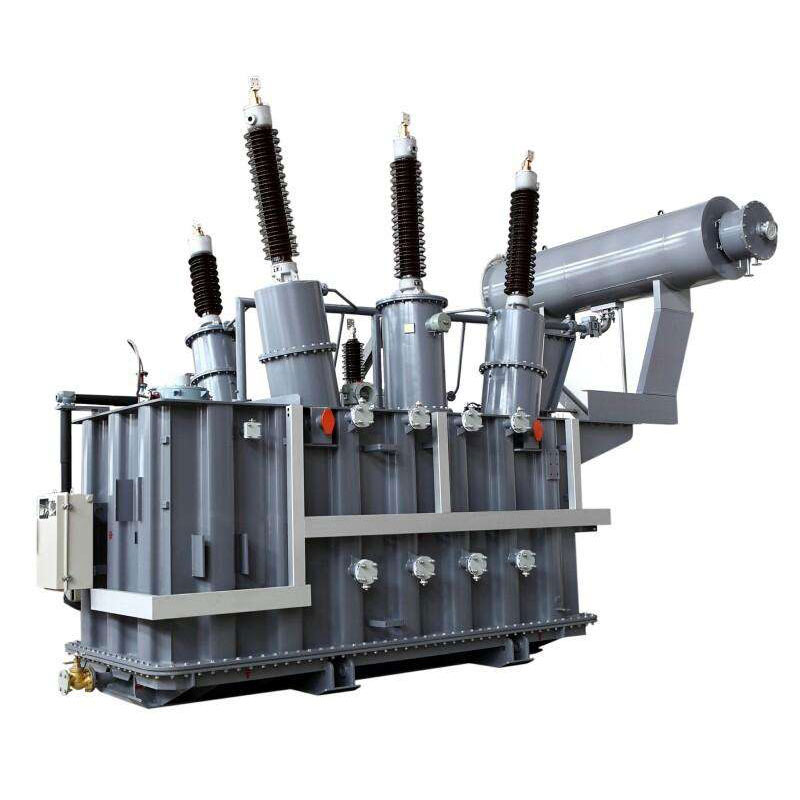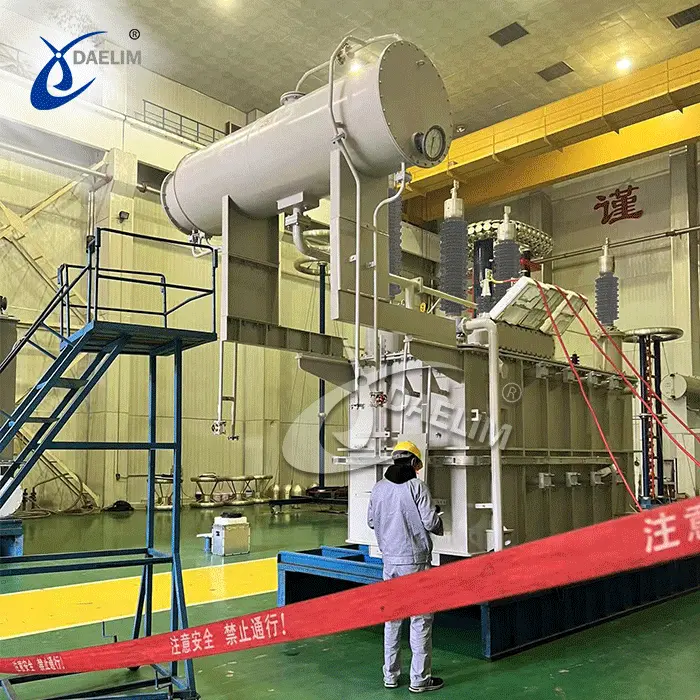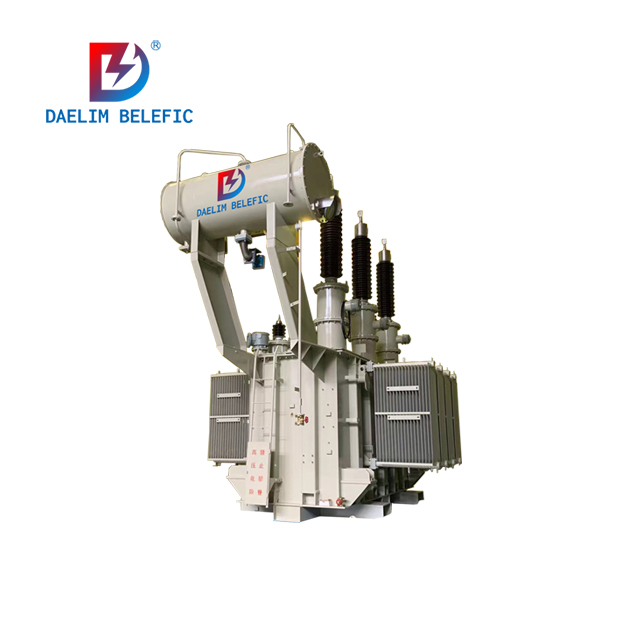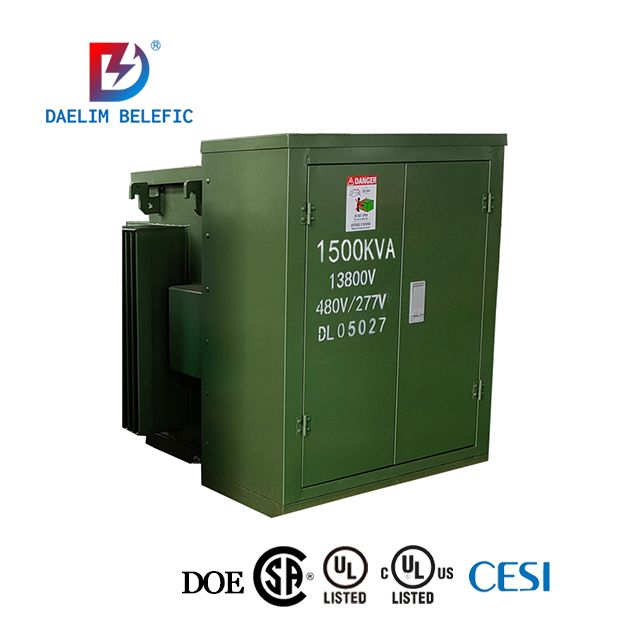Utilizing kV Transformers to Their Full Potential

From power generation and transmission to industrial and residential use, kV transformers play a crucial role in ensuring the safe and efficient distribution of electrical power.
Here at Daelim, we'll take a closer look at kV transformers, their types, applications, costs, benefits, and maintenance requirements.
- 12 kV Transformer
- 15 kV Transformer
- 100 kV Transformer
- 230 kV Transformer
- 345 kV Transformer
- 500 kV Transformer
What Does kV Mean On A Transformer?
kV on a transformer stands for kilovolt, which is a unit of electrical potential difference or voltage.
Kilo volts serve as a widely recognized measure for expressing high voltage levels.
For example, a 230 kV transformer has a voltage rating of 230,000 volts, while a 500 kV transformer has a voltage rating of 500,000 volts.
Overall, the kV rating is important because it determines the maximum voltage that can be safely and efficiently transferred by the transformer.
What Are kV Transformers?
kV transformers play a vital role in the functioning of the power grid, facilitating the generation and distribution of electricity to residential, commercial, and industrial establishments.
Their primary purpose is to convert electrical energy from one voltage level to another, enabling efficient transmission of power over long distances.
Essentially, a kV transformer comprises multiple coils of wire wound around a magnetic core.
Through the manipulation of the coil turns and the magnetic characteristics of the core material, the transformer can either increase or decrease the voltage level of the electrical energy.
kV transformers exhibit a broad range of voltage capacities, encompassing various applications.
For instance, smaller-scale industrial operations may employ a 15 kV transformer to meet their specific electrical requirements.
Whereas residential applications, they use no more than 35kV transformers for power distribution. The specific type of kV transformer used depends on the voltage requirements of the application.
Learn more about Residential Transformer
What Are The Different Voltages Of kV Transformers?
Because of the wide variety of industries and electrical systems, the specific type of kV transformer utilized is generally determined by the voltage requirements of the application.
12 kV Transformer

In small-scale industrial and residential settings, a 12 kV transformer finds frequent application due to its suitability for low voltage requirements.
It facilitates the distribution of power for lighting, heating, cooling, and various household appliances, ensuring a comfortable and functional living environment.
A 12 kV transformer is typically used to regulate voltage levels and supply power to buildings, lighting systems, and other low-voltage equipment.
Moreover, a 12 kV transformer may also be highly used in industrial applications to supply power to motors, pumps, and other low voltage equipment.
15 kV Transformer
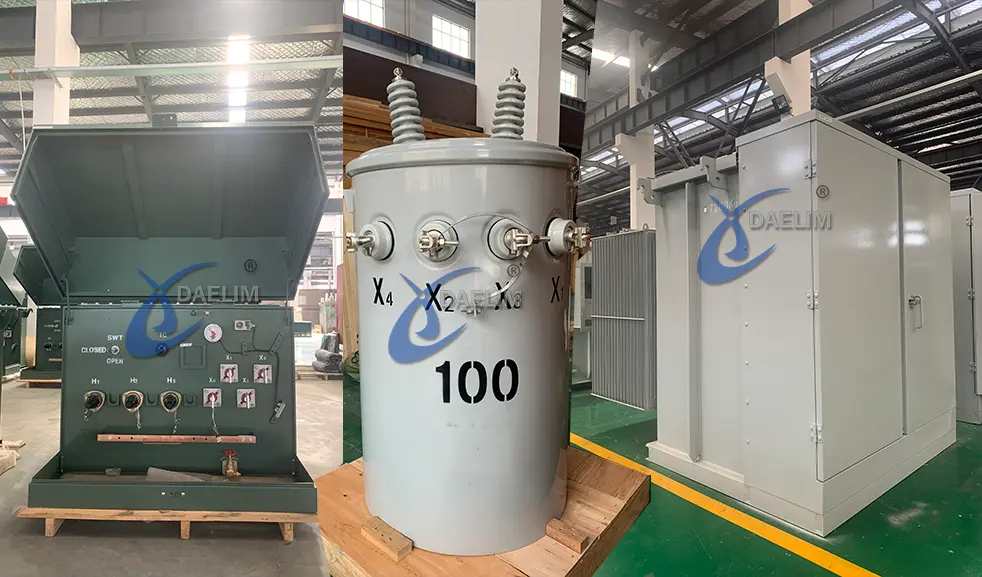
A 15 kV transformer is an adaptable electrical device available in a diverse range of voltage options, spanning from 5 kVA to 15500 kVA.
Often, a range of capacitance is available, with values given in linear feet at the given voltage, power, and frequency (often 50 or 60 Hz).
Furthermore, the 15 kV transformer is a fundamental component in sub-stations, which serve as intermediate points in power distribution.
They enable the transfer of electricity from high-voltage transmission lines to lower-voltage distribution networks.
Reading more about The 15 kV Transformer
100 kV Transformer
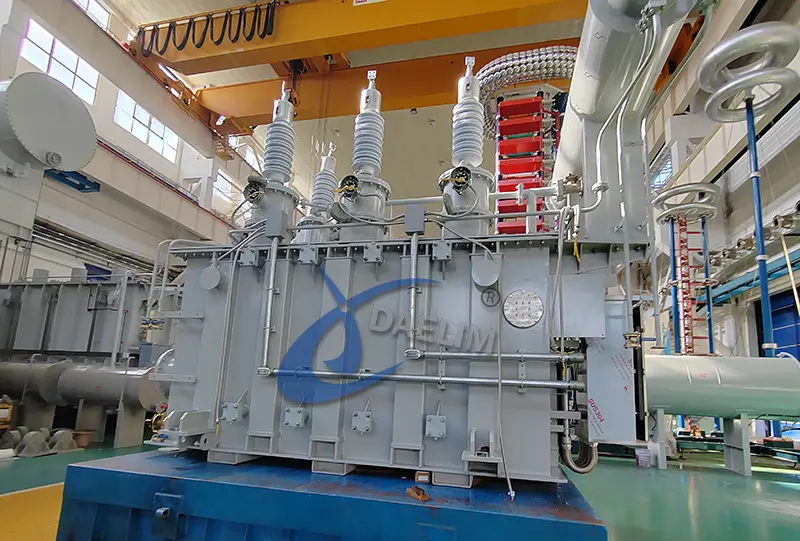
A 100 kV transformer is a high-voltage transformer that operates at a voltage level of 100,000 volts.
To operate a 100 kVA transformer, 416.67 amperes are necessary.
A 100 kV transformer's winding material is typically made of copper or aluminum, depending on the specific application and cost considerations.
With regards to the 100 kV transformer price, a three-phase 100 kV transformer with a voltage ratio of 100/13.8 kV can cost around $150,000 to $200,000.
Whereas, a smaller, single-phase 100 kV transformer with a voltage ratio of 100/6.9 kV can cost around $60,000 to $100,000.
Nevertheless, the 100 kV transformer price can fluctuate based on factors such as the manufacturer, geographical location, and individual customer specifications.
Get it now: The Ultimate FAQs Guide To 100 MVA Transformer
230 kV Transformer
 A 230kV transformer is a high-power transformer that is capable of converting different electrical voltages into one, specifically high voltage.
A 230kV transformer is a high-power transformer that is capable of converting different electrical voltages into one, specifically high voltage.
To illustrate, let's consider a scenario where the input voltage is 120,000 volts. In such a case, the transformer has the capability to increase or step up the voltage to 230,000 volts.
Conversely, if the input voltage is 345,000 volts, the transformer can step down the voltage to 230,000 volts.
A 230 kV transformer is typically much larger than low-voltage transformers and can weigh several hundred tons.
It typically uses a liquid-based cooling system, has a copper or aluminum winding material, and can weigh several hundred tons.
Like other power transformers, a 230 kV transformer should undergo various tests, including insulation resistance tests, power factor tests, and load tests.
345 kV Transformer
A 345 kV transformer is generally considered a high voltage transformer.
This is because it operates at voltage levels above the threshold.
In addition to that, a 345 kV transformer with bundled conductors has a limited power delivery capacity of about 900 MW and 400 MW.
This capacity limitation means that multiple transmission lines may be necessary to meet the power transfer needs of a specific region or area.
An average 345 kV transformer has the potential to weigh approximately 300 tons.
Furthermore, a 345 kV transformer has a voltage rating of 345,000 volts and is technically designed to withstand high electrical and mechanical stresses during operation.
Try for free: 20 MVA Transformer: The Ultimate FAQs Guide
500 kV Transformer

A 500 kV transformer is an ultra-high voltage transformer that operates at a voltage level of 500,000 volts.
It is one of the largest and most powerful transformers in use today.
In addition to its high voltage rating, a 500 kV transformer has a high power rating, typically ranging from 500 MVA to 1500 MVA.
A 500 kV Transformer is technically designed as a single-phase or three-phase unit, depending on the specific application and requirements.
It is typically much larger and heavier than lower voltage transformers, and it requires specialized equipment and procedures for installation, maintenance, and repair.
Keep reading: US Transformer Manufacturers
What Are The Applications Of kV Transformers?
kV transformers have numerous applications across various industries and settings due to their ability to transfer electrical energy between circuits by electromagnetic induction.
Some of the common applications of kV transformers are:
Power Generation and Transmission
kV transformers help to minimize energy loss during transmission, making it possible to transmit electrical energy over long distances without significant loss in power.
They are also used to connect power generators to the transmission network, ensuring that the electrical energy is highly delivered at the correct voltage and frequency.
Industrial Applications
A kV transformer is generally applied in various industrial applications, such as in manufacturing, mining, and oil and gas.
These power transformers are frequently found in HVAC and lighting systems, to regulate the voltage levels and ensure the proper functioning of the system.
Learn more about Transformer Application
Residential Applications

kV transformers are frequently used in residential settings to supply electrical energy to homes and buildings.
In addition to that, a kV transformer helps to ensure that the electrical energy is then delivered at the correct voltage and frequency to power appliances, lighting, and other devices in the home.
Renewable Energy

kV transformers are also used in renewable energy applications, such as wind and solar power generation.
Moreover, a kV transformer helps to ensure the efficient transfer of energy from renewable energy sources to the power grid, enabling the widespread use of renewable energy.
Try for free: Daelim Transformers Solution For Renewable Power Plant
What Are The Cost Factors For kV Transformers?
The cost of kV transformers can vary depending on various factors, including manufacturing costs, material costs, installation, and maintenance costs.
Manufacturing Costs
Manufacturing costs constitute a significant element affecting overall expenses. These costs involve factors like labor expenses, equipment expenditures, and design.
Material Costs
Material costs include the cost of the raw materials used to manufacture the transformer, such as copper, aluminum, and other materials.
Installation And Maintenance Costs
The cost of installation includes expenses related to transportation, site preparation, and installation labor.
Maintenance costs include expenses related to regular maintenance, repair, and replacement of parts over the transformer's service life.
Get it now: Step-by-Step Guideline On Installing A Transformer
How Much Can You Get For A 100 kV Transformer Price?
A 100 kV transformer price can vary depending on various factors such as its specifications, design, and manufacturer.
As an example, a 100 kV transformer with a power rating of 50 MVA and a basic design may cost around $100,000 to $200,000.
At the same time, a 100 kV transformer with a power rating of 100 MVA and a voltage ratio of 100/34.5 kV (Kilo Volts) can cost around $200,000 to $300,000.
However, a 100 kV transformer with a power rating of 500 MVA and advanced features may cost over a million dollars.
As you can see, the 100 kV transformer price will depend on the specific requirements, design, and features required for the application, as well as the manufacturer and market conditions.
How To Maintain A kV Transformer?
Proper maintenance of kV transformers is essential to ensure their continued reliable operation.
Maintenance activities can include regular visual inspections, oil sampling and analysis, electrical testing, cleaning, replacement of parts, and the use of thermography.
By following these maintenance practices, owners can extend the service life of their transformers, minimize the risk of equipment failure, and improve system reliability.
1. Visual Inspection
Regular visual inspections of a kV transformer can help identify any signs of damage, corrosion, or other issues.
Visual inspections should include checking the transformer's oil level, looking for leaks, checking for loose connections, and verifying that cooling systems are functioning correctly.
2. Oil Sampling and Analysis
Regular oil sampling and analysis can help detect any signs of abnormal wear, contamination, or other issues that can affect the kV transformer's
performance.
The analysis can also help predict potential problems before they occur.
3. Electrical Testing
Electrical testing, such as insulation resistance testing, can help identify any issues with the kV transformer and its electrical components.
This can include issues such as damaged windings or short circuits.
4. Cleaning
Regular cleaning of kV transformers can help prevent the accumulation of dust and dirt that can affect their performance.
As highly suggested, regular cleaning is crucial in preventing the transformer from experiencing overheating issues.
5. Replacement of Parts
Regular replacement of parts such as gaskets, bushings, and other components can help to ensure the transformer's continued reliable operation.
6. Thermography
The use of thermography can help to identify hot spots within the kV transformer that can be indicative of issues such as loose connections or damaged components.
What Can Be The Future Outlook For kV Transformers In The Power Industry?
According to Future Market Insights, the future outlook for kV transformers in the power industry is positive.
Currently, kV transformers are becoming smarter, allowing utilities to monitor their performance in real time, detect potential issues before they occur, and optimize their operation.
As well as that, a kV transformer can be highly used in conjunction with energy storage systems to provide grid stabilization and backup power during periods of high demand.
The increasing adoption of electric vehicles is creating a need for more charging infrastructure, which in turn requires kV transformers to support the increased demand for electricity.
You may enjoy: Three-phase Transformer Industry Basic Guide
Daelim Provides High-Quality kV Transformer Worldwide
At Daelim, they are highly committed to providing our customers with high-quality kV transformers.
Daelim transformers are rigorously tested to ensure they meet the highest quality and safety standards. Possessing UL, CUL, and CSA certifications and test reports signifies that a product or system has undergone rigorous testing and evaluation by independent organizations in the United States. UL (Underwriters Laboratories), CUL (Canadian Underwriters Laboratories), and CSA (Canadian Standards Association) are highly respected and recognized authorities in product safety and compliance. Having these certifications ensures that the product meets stringent safety standards and regulations, giving North American consumers confidence in its reliability, performance, and adherence to electrical safety guidelines.
Daelim offers a wide range of customizable kV transformers with various voltage options to suit different needs. These include transformers with voltages like 7.2 kV, 7.6 kV, 12 kV, 13.2 kV, 13.8 kV, 14.4 kV, 15 kV, 25 kV, 35 kV, 44 kV, 66 kV, 69 kV, 100 kV, 110 kV, 115 kV, 132 kV, 230 kV, 345 kV, and 500 kV. By providing customization options, Daelim ensures that customers can obtain transformers that align with their specific voltage requirements, making it easier to meet their electrical needs effectively.
Through years of active involvement in the industry, Daelim has successfully solidified its reputation as a dependable source of transformers catering to a vast array of uses.
Above all, Daelim’s kV transformers are generally manufactured using the latest technology and materials to ensure their efficiency and reliability.


